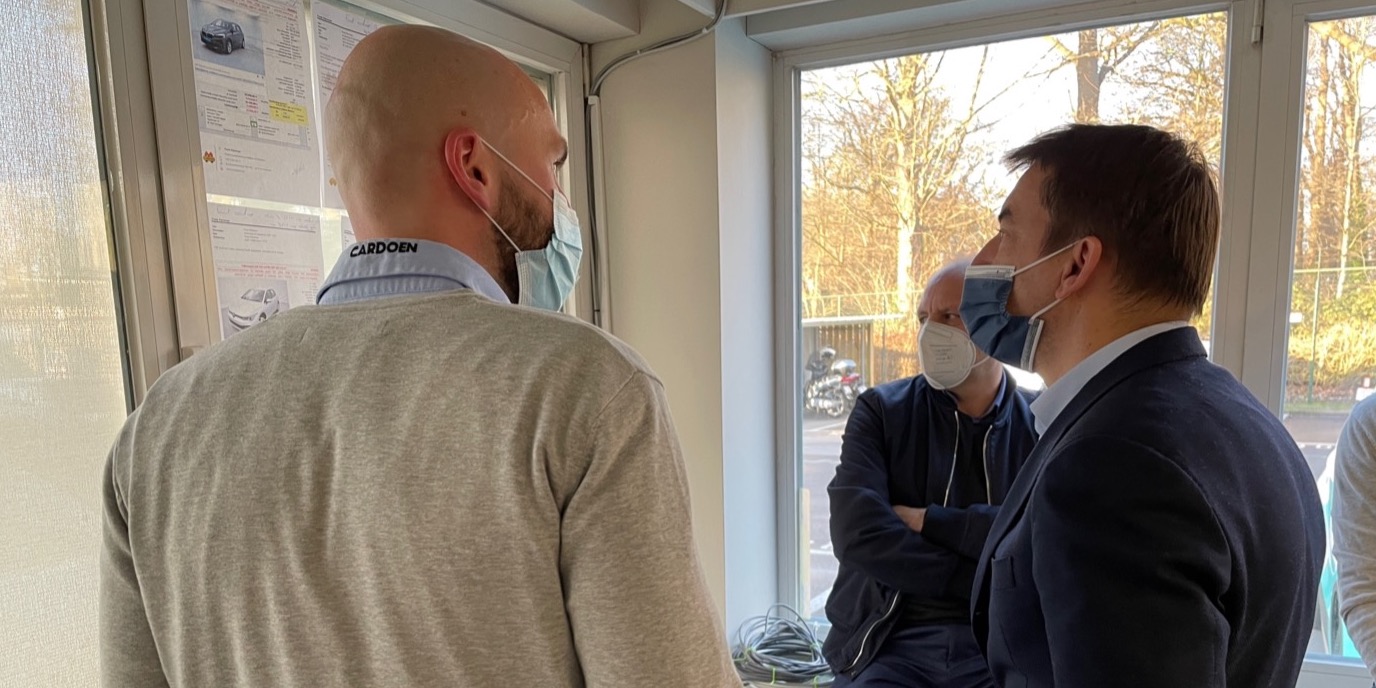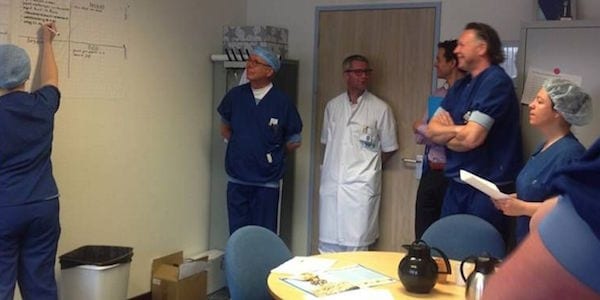
To master lean thinking, lead with lean thinking
FEATURE – When lean seems to fail, leaders should persist and work even harder to bring people on the journey - by observing the situation, providing clear success criteria, and learning together on the job.
Words: Michael Ballé, author, executive coach, and co-founder of Institut Lean France
“We tried to pull, but it didn’t work.”
“How many times?”
“What do you mean ‘how many times’? Look, it just doesn’t work in our case.”
“So, the first time you fell off your bike, you gave up cycling?”
This conversation happened earlier this week, but could have just as well occurred 24 years ago when I first studied how Toyota engineers taught Valeo manufacturing engineers to “lean out” a production cell. The first plan the Toyota engineers came up with was:

- Pick up a container every 15 minutes;
- Create a location in logistics to create “fake” trucks waiting for the real one;
- Don’t mess with kanbans;
- Create space for operators to record every problem with time, cause, countermeasure;
- Halve batch size.
None of this was possible then. None of this is possible now. It’s not that people won’t do it. It’s that they tried and it didn’t work, so they moved on to the next thing.
As Luke says to Yoda: “You want the impossible.” When Yoda levitates the X-Wing out of the swamp, Luke blurts out “I don’t… I don’t believe it!” And Yoda answers his famous line: “That is why you fail.”
The point here is not that believing anything will make it so, but that trying until it works will make you learn. To be fair, most people are used to execute their boss’ commands at work. The boss defines the situation, then decides that this or that needs to be done, and then they tell someone to do it.
The person thinks about it, works out an action plan to get it done, more or less follows the steps (considering that normal friction means that some steps will happen very differently than planned), and then… it either works or not, or so and so. At this point, boss and employee determine whether the command was a success or failure, before they essentially move on to the next command. Things either work out or not, it’s is just how it is.
With lean thinking, this works out differently. We don’t hire people to do a job, we hire them to succeed at a job. When manager and worker have decided they need to do something (such as setting up a pull system, without which there is no lean), they decide to succeed, which means trying again and again until we get the hang of it.
This is a very different form of problem solving. Most people feel they have solved the problem when they have contained it with an administrative measure: more inspections, more procedures, more audits, more controls. In reality they haven’t solved anything – they’ve just burdened the process with more paperwork to inspect bad work out of the product or service, without addressing the cause of the problem.
In lean thinking, we try to give people a clear, visual way to see themselves improve as they try different ways of actually solving the problem. For instance, in most assembly lines, there are buffers of parts between stations (usually neatly placed on a conveyor, but still buffers). When the line doesn’t deliver enough output, the usual demand is to add capacity. The lean response is to first go to single-piece-flow to understand what the real problems are.
In traditional problem solving, this means recording all variations in the work flow and gradually planning to reduce the number of parts in the buffers and so on. In the lean way, this means forcing the line to run with just one part between stations for a couple of hours every day. By doing so, we give the people on the line the power to visualize what single piece flow really means and figure it out for themselves – and then ask support for technical services on real issues. Until you succeed at one piece flow.
Similarly, most machines are now programmed to stop if they make too many defectives, but it feels impossible to stop the machine at every defect (the machine doesn’t mind, but engineers feel production output would drop dismally). Rather than plan for every machine in the machine part, start with one to three machines, program them to stop at every defect, and have all maintenance technicians focused on fixing these problems. When you’ve improved these three machines, move on to the next three, until all machines run at full capacity and stop at every defect.
Solving problems with “process” solutions is very different from developing problem solvers. The point of lean thinking is that we don’t simply want the problem to go away. We want to develop the person having the problem to learn to deal with it autonomously in all its varied cases so that the problem can be handled quickly and, eventually – if we’re lucky and they’re smart – its root cause becomes apparent and we can improve the situation at the source.
But this requires a very different managerial attitude. In the company mentioned earlier, the leader decided that their product flows to distribution could benefit from using a cross-dock. A cross-dock is what you go through every time you take a local connection after a transatlantic flight: you’re going halfway around the world on a large jumbo jet with a bunch of people, before – upon reaching the hub – you all split up and take local flights enabling you to make the shortest possible connection. Similarly, finished products that need to be distributed to sales outlets would be first shipped long distance in one truck, then go through a “connection center” and board a local shuttle to get to whichever store they’re destined to.
In the traditional way, the leader of the company figured this would be a great improvement and tasked one of his best and brightest to “make it so.” The manager then hired consultants to calculate the perfect cross-dock set-up and then tell the logistics operators (because in this case the logistics manager is resisting the idea) what to do. We’re looking at the usual way managers manage:

They haven’t pushed the “go button” asked, but when asked how long the products would remain in the “cross-dock” inventory, the answer was “from two hours to two days.” Not reassuring.
The lean way is not quite the same. First, a lean manager would frame the problem clearly with an indicator of success – products going through the cross-dock should never be inventory, but have the shortest “connection” time possible. Then she would start by setting up one shuttle system (milk run in lean parlance) between one stock center and one shop, then a second, then a full milk run loop). Then take one long-haul destination and see how to get some products to connect with the shuttle service so that they never stop moving: continuous flow from the long haul truck to the short-distance delivery shuttle to the store.
Once the milk run is perfected and works properly, she’d then try it on the next bundle of products, until the whole system works as a cross-dock and, more importantly, until the people running the cross-dock have learned to deal with a long list of typical cross-docking issues and come up with local ideas to the run the process smoothly.
We’re looking at a very different way of managing:

Leading with lean is first observing with the people themselves, and if someone, somewhere has a better idea – like in the cross-dock case – going to that gemba with the people who will be expected to make it work.
Then, orient by giving clear, material, hands-on criteria for success, such as “short connection between long-haul and local shuttle” – a practical way to see how well we’re doing while we work. (As I write this, I’m looking at my word count and the spell check queries my dodgy grammar. I’m also checking my reference material on lean logistics to try and make sure I don’t write too much nonsense.)
And finally learn-by-doing. Don’t write up an extensive plan detailing all contingencies. Don’t ask consultants to over-analyze the situation. Try it. Fail. Learn. Try it again. Success or failure is not counted in terms of whether “it worked” or “it didn’t work” but in terms of “how many learning cycles did we have to go through until we learned to make it work.”
Calculate, command, control is good enough for routine, stable situations that can work with mediocre work. It assumes that 1) we can forecast how things will turn out, 2) people will put their heart and minds into obeying the command, and 3) that control can somehow inspect quality into the work. In today’s turbulent, surprising, fast-moving environment with disengaged workers and high variety, calculate-command-control simply no longer fits the period: we have to learn to do better than that.
But then again, we always do when we want to get good at something, and not just get by. As Ginger sings to Fred in Swing Time: “Take a deep breath, pick yourself up, dust yourself off, start all over again: work like a soul inspired, until the battle of the day is won.”
Buy your copy of Lead with Lean today by clicking here

THE INTERVIEWEE

Read more


FEATURE – Lean Thinking is about voluntary participation, not audits that are meant to ensure compliance. The authors explore the advantages of pursuing cooperation rather than control.


INTERVIEW – PL sits down with a consultant and a manager from the St Elisabeth hospital in the Netherlands to talk about the organization’s “loving care” approach to treating patients.


FEATURE – As she packs before leaving Botswana, the author tells us of a wonderful example of Lean Thinking that resurfaced from her past working in the Botswana tourism industry.


FEATURE – One year into its lean journey, this Lithuanian mining company is winning the hearts and minds of its people. Here, the management team reflects on how they are doing it.

